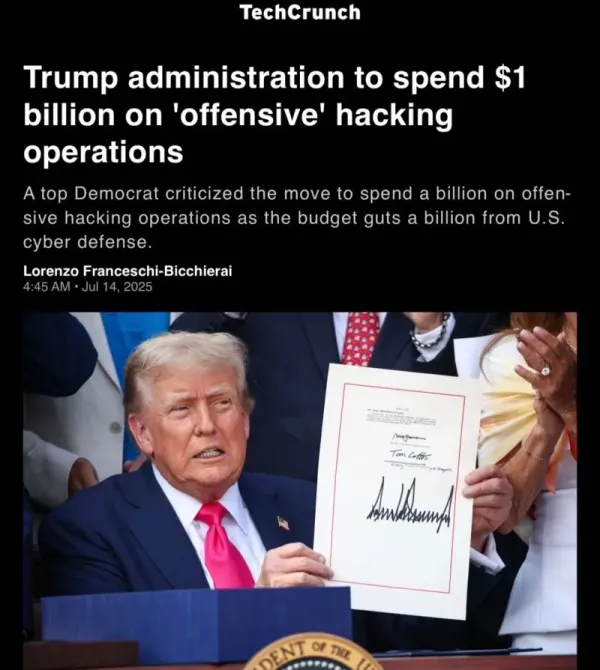The Chief Geopolitical Officer: Building Integrated Risk Management for the 2025 Threat Landscape

The Emergence of a New Executive Role
The global business landscape has fundamentally shifted. With governments and international institutions acknowledging the fragmenting global order, the creation of a Chief Geopolitical Officer role is an urgent priority for business. This transformation represents more than just another C-suite position—it signals a critical evolution in how organizations must approach risk management in an interconnected yet increasingly fragmented world.
Last week, the UK Cabinet Office released its first ever Chronic Risks Analysis: a comprehensive risk forecast for UK businesses and policy leaders. For the first time, a major G7 economy has explicitly told its business and policy community that international instability and the fracturing of the international order are risks that all companies—not just large corporations—must now actively plan for.
This unprecedented guidance aligns with the World Economic Forum's Global Risks Report, which revealed a leadership community concerned by an increasingly fractured global landscape where escalating geopolitical, environmental, societal, and technological challenges threaten stability and progress. Its 2025 launch has proven prescient, with the year already seeing an escalation on a number of geopolitical fronts – trade wars, cyber conflict and even kinetic strikes.
https://www.weforum.org/stories/2025/07/chief-geopolitical-officer-business/
The Limitations of Traditional Risk Management
Traditional corporate approaches to navigating international relations are no longer sufficient. The old paradigm of risk management operated on a foundational assumption: a stable, rules-based international system where business could operate within predictable and investible frameworks. However, both the Geopolitical Risk with Trade (GPRT) index has surged by approximately 30% from 2020 to 2024 compared to the previous two decades, and the Global Supply Chain Pressure Index has nearly tripled during the same period.
Chief Risk Officers focused on financial and operational issues, and government affairs departments handling compliance and lobbying, are being outpaced by today's geopolitically charged environment. These risks span the spectrum, from policy fragmentation and digital threats to financial warfare, including:
- Regulatory divergence: Conflicting national policies create impossible compliance matrices, as seen with TikTok facing forced divestiture in the US while operating freely in Europe
- Military action: Foreign companies lost over $170 billion exiting Russia, including British Petroleum's $25.5 billion write-off following the invasion of Ukraine
- Cybersecurity: Digital safe havens enable online gangs to target and extort businesses, causing severe financial distress and forcing governments like Costa Rica to declare National Emergencies
- Economic conflict: Sanctions, tariffs, and export controls have become routine tools, with US sanctions estimated to have cost Huawei $30 billion annually in smartphone losses alone
The CGO: More Than Risk Management
The CGO is not an elevated government affairs director; it is a strategic position integrating sophisticated geopolitical intelligence directly into core business decision-making. This role transcends traditional lobbying, focusing instead on proactive navigation of the global political landscape through:
- Intelligence and anticipation: Monitoring global political developments and developing scenario-planning to anticipate impacts on operations, supply chains, market access, and strategic partnerships
- Stakeholder navigation: Managing complex relationships with diverse governments, regulatory bodies, and international organizations with conflicting agendas
- Crisis response: Providing rapid, informed responses to unforeseen geopolitical events affecting operations, supply chains, or reputation
Early adopters are already seeing results. While other Western car manufacturers found themselves shut out of China, Tesla's Gigafactory Shanghai became their highest-capacity vehicle production facility worldwide, accounting for over 40% of their global deliveries. Similarly, Apple's diversification of its supply chain to India enabled a 50% year-over-year increase in iPhone production and billions in new revenue.
The Integrated C-Suite Response: Beyond the CGO
However, as one astute observer noted: "A CGO is not enough. You need a decision-making executive accountable for building structures through the organization that capture signals and drive and coordinate actions. Geopolitical risks interact with physical, cyber, supply chain and many other risks, which have to be brought together centrally to drive preparedness, mitigation and whole of enterprise crisis response. Otherwise it's another silo and valuable insights and opportunities remain unseen."
This observation highlights a crucial reality: the CGO cannot operate in isolation. The modern threat landscape requires a sophisticated ecosystem of specialized executive roles working in concert to address interconnected risks.
The Chief Information Security Officer (CISO): The Cyber-Geopolitical Nexus
The CISO role has evolved from managing IT security to becoming a critical component of geopolitical risk management. Modern cyber threats are increasingly state-sponsored and geopolitically motivated, with nation-states using cyber capabilities as extensions of foreign policy. The CISO must now coordinate with the CGO to understand:
- State-sponsored cyber campaigns: Identifying patterns that indicate geopolitical motivations behind cyber attacks
- Critical infrastructure protection: Assessing how geopolitical tensions translate into heightened cyber risks for essential business operations
- Supply chain cybersecurity: Understanding how geopolitical relationships affect the security of technology suppliers and partners
- Digital sovereignty requirements: Navigating varying national requirements for data localization and cyber resilience
The synergy between the CGO and CISO is particularly crucial as cyber warfare becomes a primary tool of geopolitical conflict. The CISO provides technical expertise about vulnerabilities and attack vectors, while the CGO offers contextual intelligence about which threat actors are most likely to target the organization based on geopolitical dynamics.
The Chief Compliance Officer (CCO): Navigating Regulatory Fragmentation
The CCO has become an essential partner to the CGO as regulatory environments become increasingly complex and politically charged. Modern compliance extends far beyond traditional legal requirements to encompass:
- Sanctions compliance: Managing the ever-expanding web of international sanctions that can change rapidly based on geopolitical developments
- Export control regulations: Navigating technology transfer restrictions that vary by country and can shift based on diplomatic relations
- Anti-corruption enforcement: Understanding how geopolitical relationships affect the enforcement priorities of various jurisdictions
- ESG compliance: Managing sustainability reporting requirements that increasingly reflect geopolitical priorities and values
The CCO-CGO partnership is essential for anticipating regulatory changes before they occur. The CGO's geopolitical intelligence can help the CCO prepare for regulatory shifts, while the CCO's compliance expertise helps the CGO understand the practical implications of geopolitical developments.
The Data Protection Officer (DPO): Privacy in a Fragmented World
The DPO role has become increasingly complex as data protection regulations reflect broader geopolitical tensions. Privacy laws are no longer just about individual rights—they're tools of digital sovereignty and geopolitical competition. The DPO must work closely with the CGO to navigate:
- Cross-border data transfer restrictions: Understanding how geopolitical relationships affect data flow agreements and adequacy decisions
- Localization requirements: Managing requirements to store data within specific jurisdictions based on geopolitical considerations
- Surveillance and national security: Balancing privacy obligations with national security requirements that vary by jurisdiction
- Digital trade agreements: Understanding how trade relationships affect data protection requirements and enforcement
The DPO-CGO collaboration is particularly important as governments increasingly view data protection as a matter of national security and economic sovereignty.
The Chief Risk Officer (CRO): Orchestrating Integrated Risk Management
The traditional CRO role is evolving to become the central coordinator of all these specialized risk functions. Rather than focusing solely on financial and operational risks, the modern CRO must:
- Integrate diverse risk streams: Combining geopolitical, cyber, regulatory, and privacy risks into coherent risk assessments
- Coordinate crisis response: Ensuring that responses to geopolitical crises consider cyber, compliance, and privacy implications
- Align risk appetite: Helping the organization understand how different types of risks interact and compound each other
- Drive enterprise-wide preparedness: Building organizational capabilities that can respond to complex, multi-dimensional threats
The CRO serves as the conductor of the risk orchestra, ensuring that the CGO, CISO, CCO, and DPO work together effectively rather than in silos.
Building the Integrated Risk Management Framework
To address the complex threat landscape of 2025 and beyond, organizations need a comprehensive framework that brings together all these specialized roles:
1. Unified Intelligence Platform
Create a centralized intelligence platform that aggregates:
- Geopolitical intelligence and forecasting
- Cyber threat intelligence and indicators
- Regulatory change monitoring and analysis
- Privacy law developments and enforcement trends
- Supply chain risk assessments
- Market and economic intelligence
This platform should be accessible to all relevant C-suite executives and their teams, enabling coordinated decision-making based on comprehensive situational awareness.
2. Cross-Functional Risk Assessment
Implement regular cross-functional risk assessments that consider:
- How geopolitical developments affect cyber threat landscapes
- How regulatory changes impact operational capabilities
- How privacy requirements influence business models and partnerships
- How supply chain disruptions compound other risk factors
- How economic sanctions affect technology dependencies
These assessments should be conducted jointly by the CGO, CISO, CCO, DPO, and CRO teams, ensuring that interdependencies are properly understood and addressed.
3. Integrated Crisis Response Protocols
Develop crisis response protocols that account for the interconnected nature of modern threats:
- Escalation procedures that involve all relevant risk functions from the outset
- Communication strategies that consider geopolitical, legal, and regulatory implications
- Business continuity plans that account for cyber, supply chain, and regulatory disruptions
- Stakeholder management that coordinates with governments, customers, and partners across multiple dimensions
4. Scenario Planning and Stress Testing
Conduct regular scenario planning exercises that test the organization's resilience to:
- Geopolitical crises with cyber components
- Regulatory changes that affect technology operations
- Privacy enforcement actions that impact business models
- Supply chain disruptions caused by geopolitical tensions
- Multi-dimensional crises that combine several risk factors
These exercises should involve all relevant C-suite executives and their teams, fostering collaboration and identifying gaps in preparedness.
5. Cultural Integration and Training
Build organizational culture that recognizes the interconnected nature of modern risks:
- Executive education that helps leaders understand how different risk domains interact
- Cross-functional teams that include representatives from all relevant risk functions
- Performance metrics that reward collaboration and integrated risk management
- Communication protocols that ensure information flows effectively between risk functions
The Future of Integrated Risk Management
As the threat landscape continues to evolve, the integration of specialized risk functions will become increasingly important. Organizations that successfully build these integrated capabilities will be better positioned to:
- Anticipate threats before they materialize by combining intelligence from multiple domains
- Respond effectively to complex crises that span multiple risk categories
- Identify opportunities that arise from geopolitical shifts and regulatory changes
- Build resilience that accounts for the interconnected nature of modern risks
- Maintain competitive advantage by navigating complex environments more effectively than competitors
Conclusion
The emergence of the Chief Geopolitical Officer represents a crucial evolution in corporate risk management, but it is not sufficient on its own. The complex threat landscape of 2025 and beyond requires a sophisticated ecosystem of specialized executive roles working in concert. The CGO, CISO, CCO, DPO, and CRO must collaborate closely to address the interconnected risks that characterize the modern business environment.
Organizations that successfully integrate these functions will be better positioned to navigate the challenges and opportunities of an increasingly fragmented and volatile world. Those that fail to build these integrated capabilities will find themselves vulnerable to threats they cannot anticipate and crises they cannot effectively manage.
The future belongs to organizations that can think holistically about risk, act decisively in the face of complexity, and adapt quickly to changing circumstances. The integrated C-suite risk management framework provides a roadmap for building these essential capabilities.





